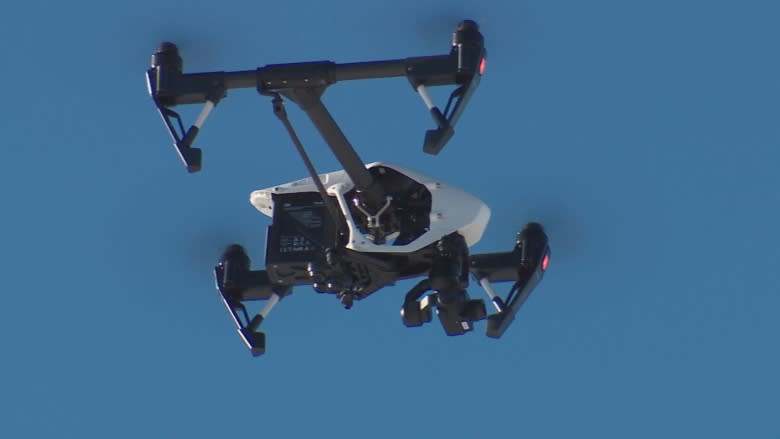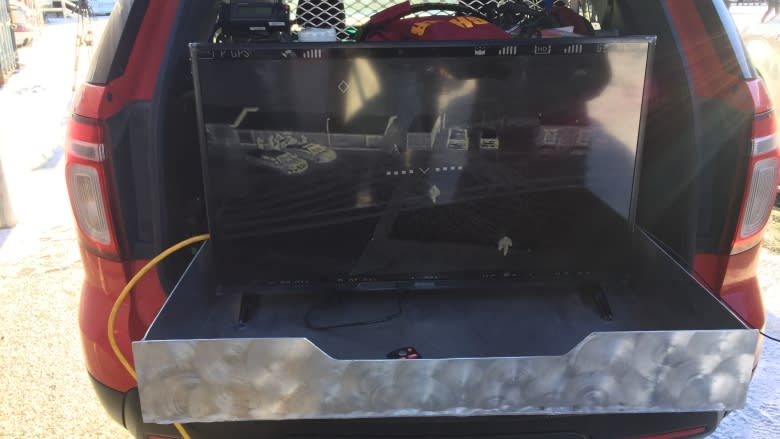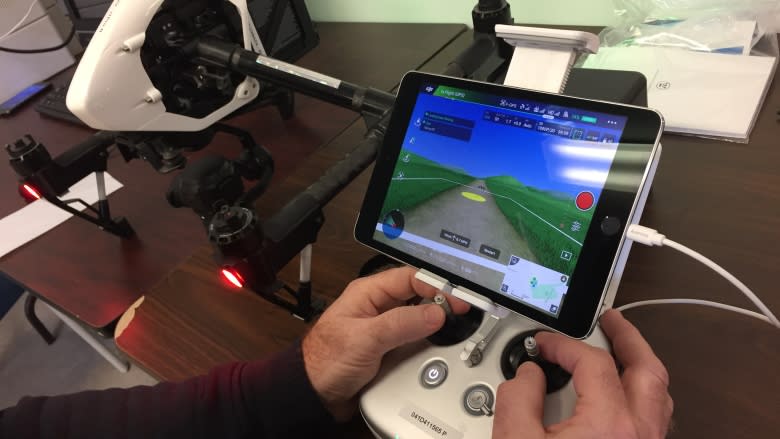Halifax Fire debuting new drones to keep crews out of danger
Members of Halifax's fire department are spending the week learning how to operate drones they say will help keep firefighters out of danger.
"I truly believe drones are going to save lives. At the very least they're going to stop the endangerment of people when we don't have to," said Chuck Bezanson, the department's flight coordinator.
"We'll know exactly where to direct our crews."
Halifax Regional Fire and Emergency will be among the first department in Atlantic Canada to add drones to their arsenal of emergency equipment. The municipality approved the $60,000 pilot project in July.
The unmanned aerial vehicles, which cost about $3,000 each, come with a thermal-imaging camera that identifies hot spots, from people lost in a wooded area to a wildfire burning underground.
'Huge advantage'
Firefighters will also use the drone footage during an emergency to assess whether it's safe to send someone into a structure.
"You can look at a building [on] fire and not really know where the fire is in the walls, how safe is the roof, how safe is it to actually have crews inside," said District Capt. Jim Sutherland.
"Sometimes you have to make a judgement call as to whether it's actually safe to have people in [burning buildings] or not. Sometimes you're right and sometimes you're wrong and it's on all available information. This gives us a huge advantage."
Thermal imaging
Sutherland said he isn't one for video games, but he's looking forward to his new role as a drone pilot.
He is one of the 10 firefighters who spent the week in training. Next week another group of 10 will spend several days in the classroom learning how to operate the drones.
The drone themselves can't go into a burning building since they can't withstand temperatures lower than –10 C or higher than 40 C. However their cameras can zoom in to assess a situation.
The drones will affect day-to-day operators by helping to deal with hazardous materials spills or leaks, and can determine where a fire is going, Bezanson said.
Flight simulations
In order to keep up their Transport Canada certification, the pilots will have to log flying time every 90 days, using drones in the field and through flight simulators set up in their stations.
The department hopes to start using the drones in January but Bezanson said he doesn't expect the public to actually see them in use.
"We will never ever fly anywhere but over our point of interest—a burning building, a forest fire, that's the only places we'll ever fly. Our altitude will be so low no one will ever see us flying," he said.
"Any image captures that we have during our flights will be of the actual scene and nothing else."
Approval also comes with strict regulations. Transport Canada has only certified the department's two drones to fly 152 metres or 500 feet above ground.
No-fly zones
The drones are already programmed not to fly near the Halifax airport or 12 Wing Shearwater. They will send back warnings if they're approaching the airspace and shut down if they do, Bezanson said.
He said the fire department has agreed that the harbour will be a no-fly zone as it's used as a training area for the Sea Kings. The department will also file flight plans with airports when there are training exercises, Bezanson said.
Bezanson says planning has been underway for years due to the controversial nature of drones, but so far members of the department have been very receptive to their new duties.
"We can stop putting people in harm's way because we can put a machine that is disposable," he said.






